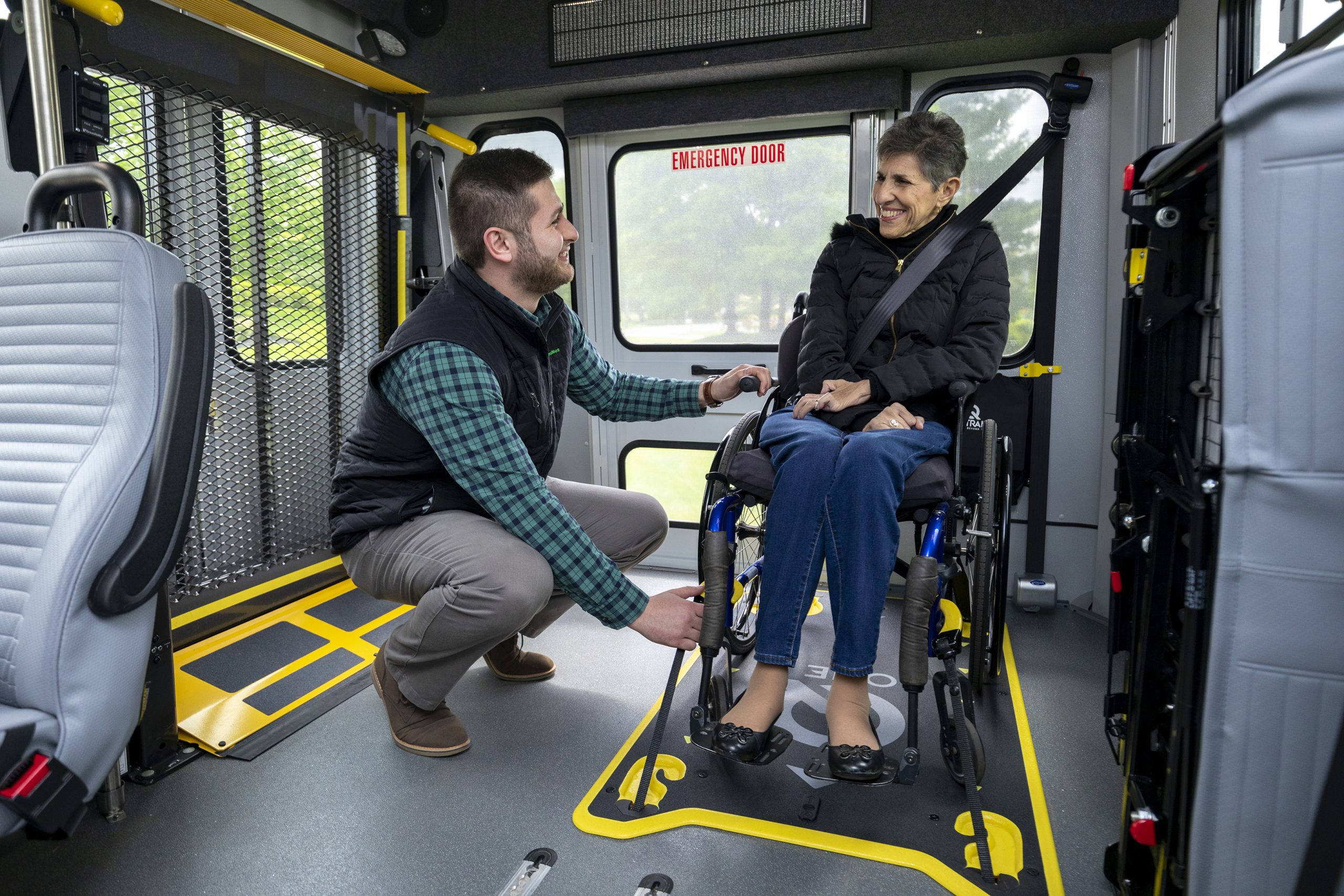
The Americans with Disabilities Act (ADA) dramatically improved access by establishing the minimum legal requirements governing access, but not safety. Even though the ADA improved access, it is not guaranteed to meet all the transportation needs of all persons with disabilities, all the time. Of course, nothing in the ADA prohibits an agency from operating service above and beyond the minimum ADA requirements. Agencies should continue to strive for and encourage new ideas to develop the next generation of safety solutions for public and private transportation.
Q’STRAINT innovations represent a major stride in ensuring that all passengers receive the safest and most secure transportation experience. By bridging the knowledge gap, addressing awareness challenges, and introducing cutting-edge safety equipment, we are setting a new benchmark in the paratransit segment.
Our dedication to safety goes above and beyond compliance with standards. It embodies a commitment to providing a safe and secure travel experience for every passenger, reaffirming our belief that safety is a passion and that every passenger should have the same level of access.
Without paratransit services, the lives of our passengers would be much more limited. This essential service has a huge impact in so many ways. Managing and maintaining a paratransit bus fleet plays a pivotal role in the daily safe transport of all passengers. This responsibility is even more crucial when it involves persons with disabilities. Transporting these passengers calls for an enhanced level of preparation, an in-depth understanding of specialized safety standards, and comprehensive training of all personnel involved.
Safe transport is essential, making it extremely critical to understand the type of equipment you are using on your vehicle and how it was intended to be used. The equipment can only help improve safety if it is used properly. This can only be achieved through continuous methods of training to understand the equipment, how it was intended to be used, standardization of equipment, and by continually striving to make improvements.
Navigating through the complexities of Wheelchair Tiedown and Occupant Restraint Systems (WTORS) standards, such as WC18 and WC19, reveals a significant challenge in awareness and implementation among transportation professionals. Despite the critical nature of these standards, a survey indicates a concerning gap in knowledge and application. The findings reveal that less than one-fifth of transportation professionals are spontaneously aware of these standards. However, when asked specifically about WC18/19, over half demonstrate familiarity, suggesting a need for proactive education and dissemination of information.
It is extremely important to make safety accessible! The first time a Q’STRAINT system was used to secure a wheelchair user in a vehicle was the very first time that user met the same standards as other passengers.
Until that point, no one thought beyond simply strapping down the chair. No one thought about the safety of wheelchair passengers. No one thought about saving lives. That is, not until groundbreaking wheelchair safety technology was developed by Q’STRAINT. Today that technology is used every day the world over and has become the gold standard in wheelchair securement.
But technology alone is never enough. Our mission of Making Safety Accessible drives us to continually improve. And our promise of Thinking Beyond Safety is how we make that happen. Q’STRAINT continues to be at the forefront of defining and establishing securement regulations worldwide; and to work with global standards groups to ensure that safety becomes accessible for wheelchair passengers in every country — guaranteeing the highest levels of safety for all.
